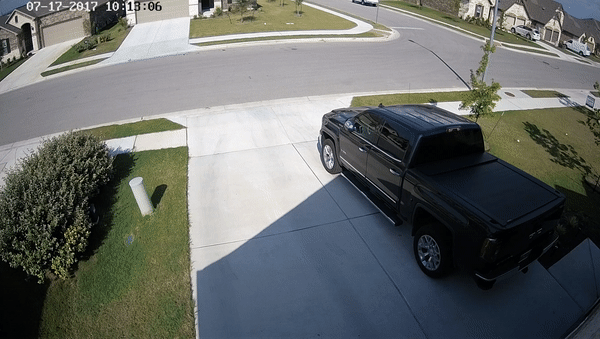The first impression upon watching this video mostly could be as thinking of some kind of magic or some computer editing. But it’s something you might not have imagined is possible with no magic but a simple phenomenon that resides within a camera.
Everyone knows how cameras work and how they record videos. But many wouldn’t know what could be achieved with different configurations of a certain camera. One such is just we are looking right above. This is not a magic nor it’s fake – as some have already been pointing out on the recently viral video, read after the break to more about it.
The guy behind the footage who actually recorded the video with his security camera on his door, appeared as “Ginger Beard” on YouTube, explains about the camera make and model and its configuration on reddit as below.
This is the HIKVISION’s DS-2CD2342WD-I. I have it set to max resolution at 2688×1520 and the video was captured at 20fps. Pretty happy with it, floaty bird aside.?
How is it possible?
One of the basic factors of a camera but important one is the frame rate, which is usually referred as frames-per-second (or fps) to specify the camera feature. In very simple words to explain the above magic of floating bird, it’s the result of a video footage recorded at the same frame rate as of the flapping rate of bird’s wings.
Now you might have seen videos with a helicopter flying with blades standing still. The floating bird video above is just a similar piece.
So how does the synchronized frame rate can make a rotating or flapping subject as frozen?
Suppose you are shooting a video at 24fps of a flying helicopter with much faster shutter speed.
- Consider the helicopter’s rotor is spinning one full rotation each second. In the video footage, each rotation is parted into 24 frames making the blades appear to be moving 1/24th of their full rotation in each frame.
- Now consider the helicopter’s rotor is spinning exactly 24 times every second, while you are still shooting at 24fps. In the video, each rotation or revolution will be represented by a single frame. Hence the blades will arrive back on their position every time the camera captures a frame. It will make it appear that you looking at the frozen blades while the helicopter is still flying.
So technically, if you can control the frame rate of your camera to record a video of the bird you know the flapping rate of, you can set it up and produce a video in which the bird will be like floating in the air with frozen wings. This method may apply to any rotating, flipping or flapping object such as propellers or rotors, coins, or the bird wings just like above.



